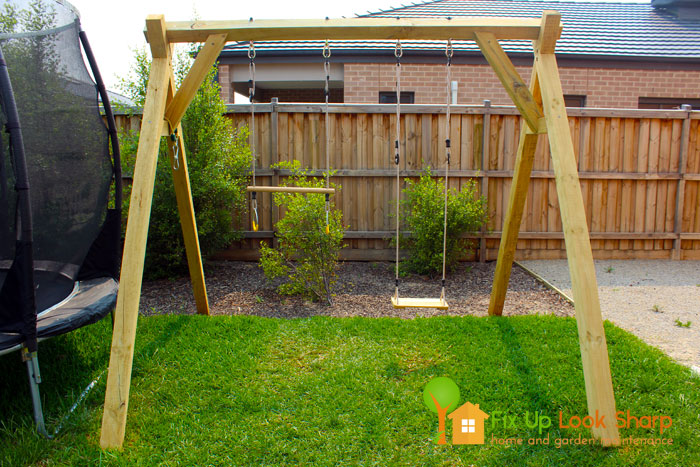
Local hardware stores make the task of sourcing timber for your home projects easy with a huge range of timber selection, the most abundant of which for outdoor use is treated pine. As there is a number of different timber treatments available would you know which type to choose if you were building something for your kids to play with? Hopefully this blog will help provide you with a little more info on what types of treated pine there are and what the alternatives are.
Treated pine has been impregnated with two major components a fungicide and an insecticide which gives the timber great resistance to decay and insect attack. There are a few different types of preservative, but the most widely used one is Copper Chrome Arsenic (CCA) where the Copper acts as a fungicide and the Arsenic as an insecticide. Over the last decade or so the main concern has been that CCA contains Arsenic, which can act as a potential carcinogen at certain levels.
Guidelines for School Playgrounds issued by the Department of Education and Early Childhood development comment on the use of CCA treated pine within school playgrounds. These guidelines state that there is insufficient data to be satisfied that there was no undue risk. As such recommend as a precautionary measure that:
The guidelines also advise, however, that there is not enough evidence to support that existing CCA treated timber play equipment is unsafe and does not require them to be pulled down. The APVMA are continuing to monitor the ongoing studies. If you were to adopt this philosophy for your garden what are the alternative timber choices?
Alkaline Copper Quaternary (ACQ) Treated Pine – uses copper and ammonium compounds as a protection against fungi and insects. This timber, however, is hard to find in your local hardware store. Small items made from ACQ treated pine, such as self-assemble vegie boxes, have started to appear but not really much else.
Light Organic Solvent Preservative (LOSP) Treated Pine – comprises of various solution of organic fungicides and insecticides. LOSP treated pine is widely available at your local hardware stores but is only suitable for above ground use.
Cypress Pine – One of my favourite timbers. It is not treated, has excellent termite resistance and is widely used. It is an extremely hard wood for softwood and has an amazing smell when working. It can have an above ground life expectancy of around 40 years and an in ground of around 25 years. Care must be taken when screwing or nailing, holes for screws must be pre-drilled as splitting is common. Cypress is available rough sawn and dressed at your local hardware store or Frencham Cypress in Grovedale (http://www.frencham.com.au)
Ironbark – is regarded as one of the most durable Australian hardwoods. It is highly resistant against rot and termites. Not commonly available at local hardware stores but can be found at garden supply centres.
This is only a small selection of timbers that are available. Your local hardware store should be able to advise you further on availability, treatments and for what purpose they are particularly suited.
So what if you already have or think you have CCA treated pine in your garden? The CSIRO published a fact sheet in 2008 stating that CCA treated pine was safe to use as long as safety precautions are followed. In summary these are:
As a final note treated timber should never be disposed of by burning because when it is heated it releases toxic fumes. It can be hard to distinguish whether old timber has been treated so if in doubt always put it in your bin (if small) or take it to your local tip. According to the CSIRO the disposal and recycling of CCA treated timber are significant drawbacks and is the subject of current research.
If you found this blog interesting please visit like or follow our social media pages.
Blog Legal Disclaimer
All data and information provided in this blog is for informational purposes only. www.fixuplooksharp.com.au makes no representations as to accuracy, completeness, currentness, suitability, or validity of any information on this site and will not be liable for any errors, omissions, or delays in this information or any losses, injuries, or damages arising from its display or use. All information is provided on an as-is basis.